
How Kunihiko Ikuhara’s Mawaru Penguindrum explores the many ways we defy fate and persevere through exercises in fantasy.
The Takakura siblings—triple protagonists of Kunihiko Ikuhara’s Mawaru Penguindrum—have inherited a broken world. As heirs to the leaders of the Kige terrorist group that bombed Japan’s subway lines some 16 years ago, they have been left little by their vanished parents’ beyond their onerous reputations and the resultant ostracism they face in a society that sees even minor deviation as cause for revulsion. As heirs to the economic legacy of a post-bubble Japan, they have been gifted neither the opulent lifestyle, the elite jobs, nor the luxurious goods promised by their country’s “economic miracle.”
Far from it: the three are so poor that the only means they have of staying afloat are the occasional funds from their estranged uncle and whatever ill-gotten gains Kanba, the playboy of the trio, is able to scrape together. Destitute as they are, they have little choice but to bemoan their fate. “I hate the word fate,” moans Shouma, the eldest of the Takakuras, in the story’s opening scene. “… God is incredibly cruel. If our lives are already set in stone by fate, then why are we even born… none of us had a future, and the only certain thing was that we wouldn’t amount to anything.”
He is far from alone in his frustration. Throughout the rest of the series a number of characters express a similar rage, from his brother Kanba to the enigmatic doctor Sanetoshi. It is not necessarily fate they are railing against, though; at least, not fate as some sort of metaphysical fact. For all that is fanciful in Penguindrum—nefarious ghosts, divergent timelines, a journal that seems capable of literally rewriting reality—the series’ conception of destiny is surprisingly grounded. There is no puppet master pulling cosmic strings as Shouma fears, no metaphysical “destination of fate” like the one Sanetoshi is wont to muse about.

No, for director Kunihiko Ikuhara, fate is nothing more than the “‘soft…’ group-oriented authoritarianism where… real choice is absent” that journalist Michael Zielenziger described as the prevailing national narrative in post-bubble Japan. Consequently, the solution Ikuhara offers for defying fate rests not in the mythical journal or magical spells so common in the series but in the deliberate exercise of fantasy. Only by creating our own stories, he argues, are we able to resist the invisible forces that would convince us our lives are predetermined.
Sadly, the world of Penguindrum is so suffused with symbols redolent of this fatalistic belief that it is no wonder so many of its cast despair. A recurring statue of men arched back to back in the park recalls both the wheel of fate and the commonly held belief that history is an unchanging cycle we cannot deviate from; the spinning circles that adorn every display in the subway serve as a similar reminder, with the added implication that the Takakuras are doomed to repeat the sins of their parents. Even the series’ title seems to doom them: “Mawaru” literally translates to “spinning,” recalling again that ever-turning wheel of fate. But while these symbols might indicate the working of some universal law, the truth is that their origins are much more mundane and say far more about the culture that chooses to plaster its world with ubiquitous reminders of inevitability than it does about the natural order.
Japan circa 2011 may have worn the mask of a democratic society at the cutting edge, but elements of the nation’s social culture adopted in the decades after World War II had done much to stifle the individualism that naturally arises within democracies. Part of this was by design. In the years leading up to and after the collapse of Japan’s housing bubble, the economy was so tightly regulated by the government that it resembled less the open markets characterizing most other modern nations than a bureaucratically run quasi-socialist system that rushed headlong toward the promises of international power and wealth with little regard for the psyche of its citizens.

“Society,” the Education Ministry declared in 1960, “exists for production.” As a consequence, interpersonal relationships were dictated by a similar demand for material growth at all expense. Students were expected to devote most of their youth to rigorous study so that they might earn a place in one of Japan’s best companies. Companies turned notoriously cultish, requiring so much devotion from salarymen that karoshi—death by overwork—was and still is a legitimate occupational hazard. Parents were even expected to “[make] their children [a] sacrifice to the gods” if they wanted a stake in the good life, child psychiatrist Hisako Watanabe of Keio University Medical Center said.
What is odd is that there did not seem to be any gods to sacrifice to. For all that was made of hierarchy and authority, systems of power in Japan were constructed so that no single person was ever at fault, a fact reflected in the very language. Newspaper stories were written so that journalists rarely if ever assigned blame to the powerful or risked implicating informants; instead, they resorted to mealy mouthed constructions like “it was learned” or “it was said.” The typical response to seemingly insurmountable problems was “it can’t be helped.” “[The] power structure… [was] hollow at the center,” said Dutch journalist Karel van Wolferen; “There (was) no one at the top to run it.” And so, of course, nobody to accuse.
In a system where—as historian Robert Bellah suggests—the boundaries between state and nature begin to blur so that the very shape of systems begin to look divinely ordained and it is impossible to lay blame, the powers-that-be resemble not so much institutions designed by people but an undeniable cosmic force. “Adulthood [was] measured … in the acceptance of the process by which choices are narrowed until there are none,” reported journalist and Japanese scholar Patrick Smith: the gods that the Takakuras and all other children were sacrificed to looked like nothing so much as “fate.”

In the face of “fate,” what protests could one possibly lodge that would seem like anything greater than a child’s temper tantrum? Perhaps that is why the collapse of Japan’s economy in the autumn of 1991 was met with so little fanfare. Why, as Zielenziger reports, “Japan’s … initial response was to deny that anything had gone wrong.” It was not as if there was any shortage of anger after Japan’s economic catastrophe. The career once held out to the student willing to sacrifice her youth, the riches offered to the salaryman resigned to forgo his personal life, the status and respect promised to those wives who sought the social security of a stable home life: how could those who had upheld their end of the bargain not feel slighted as they watched bureaucrats feed the contracts they’d signed in blood into the shredder?
Yet every time such fury did boil over (it is telling that the sarin gas attacks launched by members of Aum Shinrikyo occurred only after the end of the so-called “economic miracle”), the public never bothered to investigate more deeply exactly what led to this revolt and what part they might have played in it. As novelist Haruki Murakami has it, “most people … put [it] behind them … they [said] ‘It… doesn’t have anything more to do with us.” Unwilling—or perhaps unable—to face the truth, they accepted the prescribed narrative that this was fate, and in doing so became what artist Takashi Murakami described as “inhabitants [of] [a] vacant crucible spinning in endless, inarticulate circles.”
It is only natural that these spinning souls would adopt the wheel of fate as the emblem of their society, and only natural that they would deny the children of Aum-like terrorists any chance to forge their own narrative. And at first it appears that they are successful. If Shoma detests the concept of fate, the only narrative he has constructed to explain his family’s lot is one in which a goddess has consigned him and his siblings—depicted in his fantasy as lambs, that most unthinking of animals—to a life of misery. Kanba may fancy himself a rebel, but for much of the series his only recourse is the same violent fantasy of terrorism that led his parents to try and thaw what they called the “world of ice” through bombings; in trying to defy the expectations society has placed on him he is doomed to fulfill them.

This desperate need to escape into sabotaging fantasies seems to be a universal condition: the actress Yuri is so scarred by earlier trauma that she seems free only when on the stage. Shoma’s classmate Ringo has even gone so far as to declare that she “loves fate” because it assures her that she will one day replace her lost sister Mamoka and fix the schism between her parents that her death caused. She can only parse the nightmare of her parents’ crumbling marriage through the lens of an aquatic-themed narrative where all the principle players are anthropomorphic versions of the stuffed animals lining her bed and where she is nothing but a replacement for her far more important sister.
Poisonous as these fantasies can be, they are also what allow Penguindrum’s cast to maintain their agency in the face of a culture that would deny them even that. It is telling that when the talking hat that has possessed Himari, youngest of the Takakuras, instructs Shoma and Kanba to retrieve the titular Penguindrum so that they might alter fate, that they immediately assume it is Ringo’s diary; telling as well that Yuri and Kanba’s biological sister Masako pursue this diary for their own ends.
They may not necessarily believe that there is magic in a high school girl’s journal, but what alternative do they have? Those blank pages represent the only chance they have to (literally) rewrite their fate. The promise that they can realize their fantasies is enough to keep them going even after they realize that the journal had no magical power, even enough to spur them on to the final revelation that it is knowledge (symbolized by a ubiquitous apple) and the attendant ability to conceive of alternative worlds, particularly the worlds of others, that will free them from the pernicious wheel of fate.

Conversely, tellingly, it is the characters with no fantasies at all who represent the greatest threat to this world and to their loved ones. Not that it always seems so: the villainous Sanetoshi’s desire to destroy “this world … made of countless boxes” people have isolated themselves in even seems noble in light of how wretched it is. His remarks recall the pronouncements of revolutionary educator and humanist Yukichi Fukuzawa that “many millions of people throughout Japan were sealed up in many millions of separate boxes;” his intentions to destroy the subway line—itself a world of boxes doomed to circle endlessly on preset tracks—seems a symbolic refutation of the oppressive determinism his society has succumbed to.
But like the Kige group he once led and like the Aum terrorists of our world, Sanetoshi’s apocalyptic vision is not a story to replace the fatalistic tale thrust on him so much as a desire for the end of all stories. He posits nothing to build in the ruins he will leave because he hopes there will be nothing left. He may have recognized in Mamoka a kindred spirit but he did not understand the significance of her journal, that she sought to alter destiny through the writing of stories—of fantasy—rather than through wanton destruction.

What Sanetoshi does not understand, however, Mamoka understood all too well: the former’s desire to be free of any constraining narrative is futile. His actions will only leave another vacuum that society will again fill with the same fatalistic narrative he despises. Far from overturning their narrative, he will only enforce it. Only in fantasy—only in the ability to conceive of a better world—can we resist this system.
No, not all fantasies are beneficial: they are as likely to delude or distract. Yes, one will still have to subscribe to a story they cannot escape, a prospect that can sound much like “fate.” But the simple ability to even conceive of ways one might challenge the predominate narrative allows for resistance where once was allowed only compliance. We may never be so truly free as Sanetoshi wishes but at least we might make a narrative better suited to ourselves and those we love. To paraphrase critic Joji Sakurai, in choosing destiny, we refuse to allow destiny to choose us.
Mawaru Penguindrum is currently available on home video from Sentai Filmworks.
This story appears in the Spring 2017 issue of Anime USA Magazine. Click here to get a print copy.


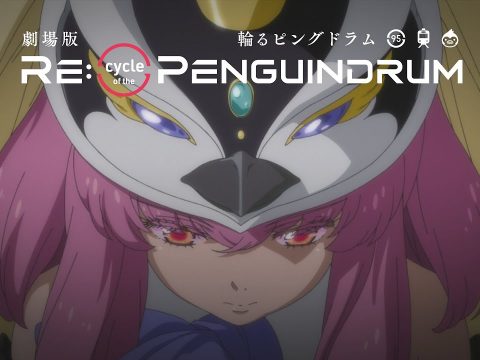
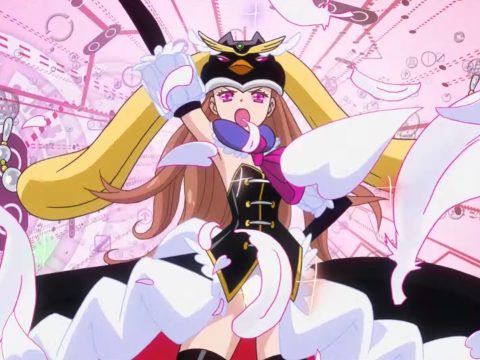
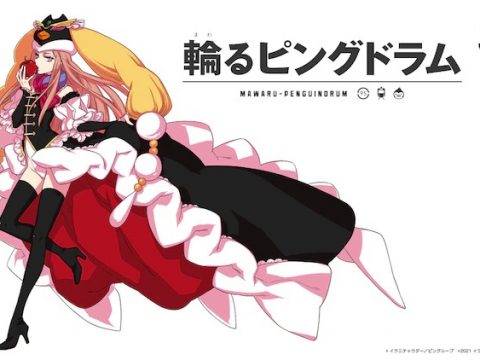
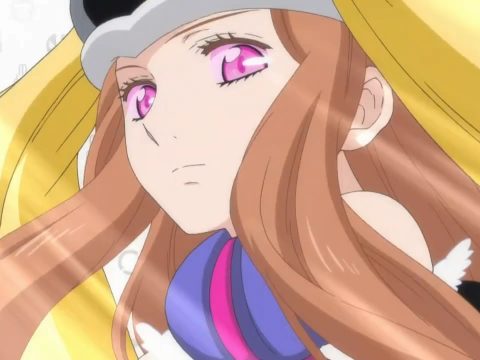
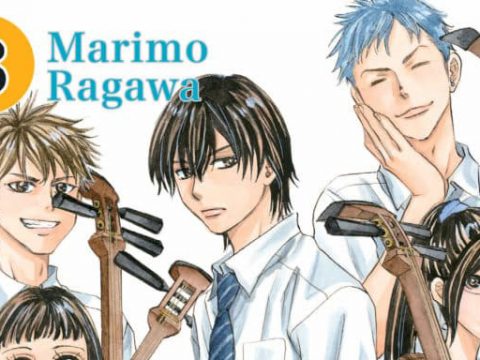
![SSSS.Dynazenon [Anime Review] SSSS.Dynazenon [Anime Review]](https://otakuusamagazine.com/wp-content/uploads/2021/08/16-9-SSSS.Dynazenon_Key_Visual_3.5-480x360.jpg)